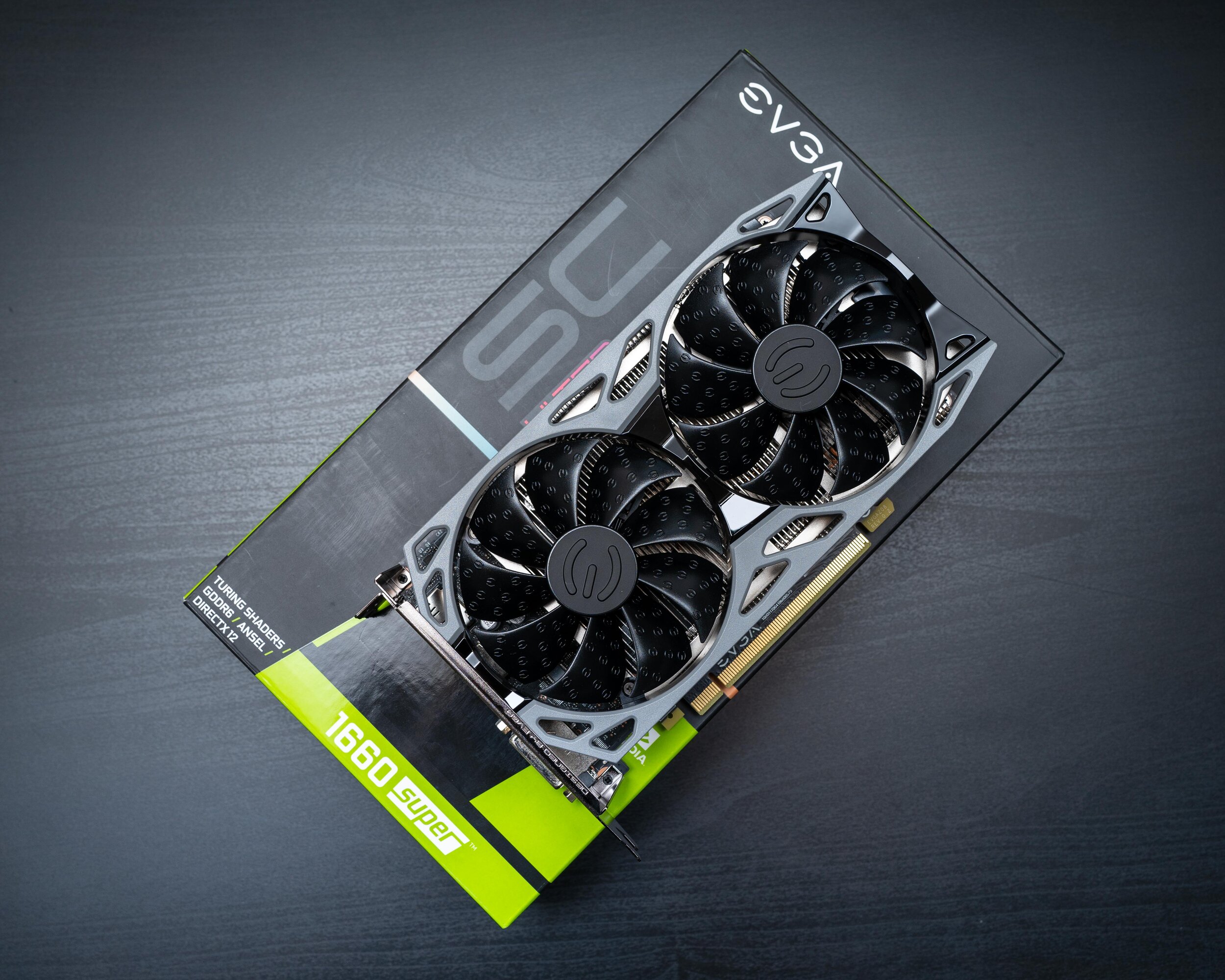Alright, it’s been a little while since I’ve played a video game. The last one I played with any kind of seriousness would have been Battlefield 4. I jumped into stuff here or there like the Mass Effect titles, but ultimately, I was dormant when it came to PC gaming for a while. The GTX 970 was put to good use for accelerating Adobe products and whatnot, so not a total waste of course. Then the Call of Duty beta came out and I even though I played it very little, it felt very Call of Duty 4 – The one game that got me into the Call of Duty series and the game that really sparked the popularity of the series. So naturally I bought it.
EVGA GTX 1660 Super Ultra SC
Now, the GTX 970 isn’t a bad card still. It’s a very capable 1080p gaming card, even with more modern titles if you’re willing to take your settings down a few notches. That’s great and all, except I bought into 1440p monitors forever ago. So, Call of Duty ended up running at 75% resolution scaling, the equivalent of medium settings, with Nvidia’s sharpening filter applied. Now it didn’t look exactly potato, mind you, and I was consistently hitting my 60FPS target, but this game looks amazing at full graphics settings. So off I went looking for a video card upgrade. Which is where I discovered in my time away from hardware, that Nvidia must have started smoking something. I shortlisted the GTX 1660 Super, the GTX 1660 Ti, and the RTX 2060. These cards seemed like the best options in the price range I set.
I quickly ruled out the RTX 2060. The price bump with in the 100-140 dollar range, and although it has a general 20% boost over the other two cards, there was no way I was taking advantage of it’s ray tracing functionality at 1440p with both the card and the rest of my hardware. After looking at benchmarks and telling myself to get over scope-creep and think logically, I ended up with the GTX 1660 Super.
Nvidia released the GTX 1660 and the GTX 1660 Ti earlier this year. The 1660 has a slightly cut down core count and GDDR5 vs the GTX 1660 Ti’s higher core count and faster GDDR6 memory. I can only assume that during some board meeting at Nvidia they decided “Hey guys, you know what would be great? Let’s invalidate the existence of these two cards and release something in between the two price points but keep selling ALL THREE.” Seems like a good idea. So along came the GTX 1660 Super, a GTX 1660 with even faster GDDR6 memory. It’s MSRP is 10 dollars more than the GTX 1660, and about 50 dollars LESS than the GTX 1660 Ti. It’ generally performs around 10% faster than the GTX 1660, and 2-3% slower than the GTX 1660 Ti. Alright, I’ll take it.
This new card is tiny!
So how is it compared to the GTX 970? Well…
· The GTX 1660 Super is somewhere between 70% and 100% faster than the GTX 970.
· The GTX 1660 Super has a 20-watt lower TDP than the GTX 970.
· The GTX 1660 Super tends to run cooler and quieter than the GTX 970 under load.
TL;DR – It’s better. Even considering this is an entry level product. Top that off with an Nvidia API supported auto overclocking feature, newer x264 hardware encoding for better quality screen capture, and a price point that’s $120 less than I paid for the GTX 970, I’m pretty pleased.
I’m running into some bottleneck issues now of course with the rest of my aging hardware. This, however, is only relevant in games. It’s very rare I’d need to cut down on my filter times in Photoshop or my Lightroom processing, so it feels like the i5-4690k might be enough for the near future. The new Ryzen hardware is looking very attractive for the money, however.

